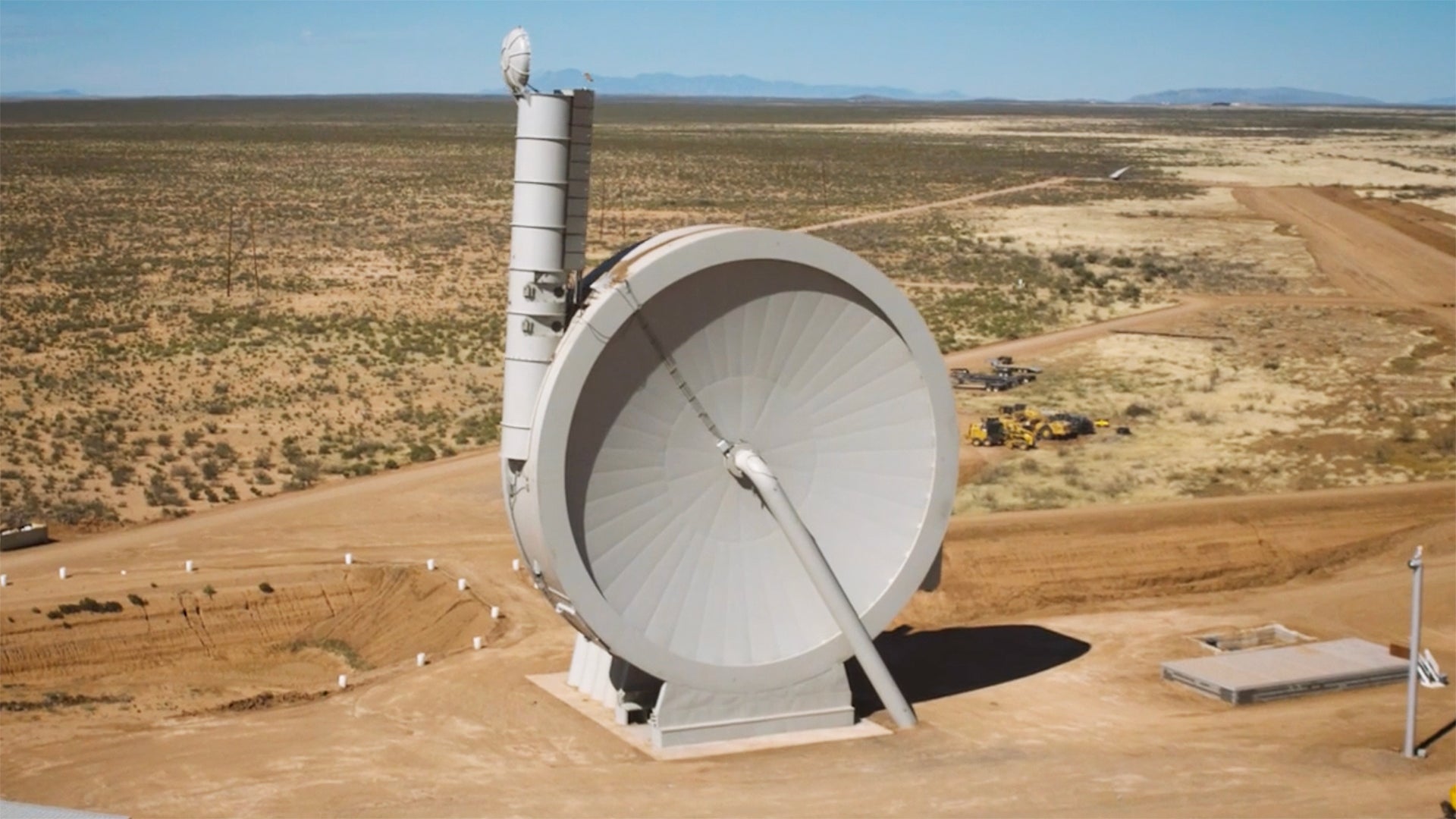A U.S. space launch start-up has, for the first time, demonstrated a kinetic-based system that’s intended one day to put small spacecraft into orbit. The SpinLaunch concept, which feels ripped right from the classic age of science fiction, is based around a vacuum-sealed centrifuge that spins an unpowered projectile at several times the speed of sound before releasing it, hurling it into the upper atmosphere, and ultimately into orbit. In this way, the company, based in Long Beach, Calif., hopes to challenge traditional rockets for putting payloads into space.
The first test flight of a prototype — a so-called suborbital accelerator — took place at Spaceport America in New Mexico on October 22, but the company only announced the milestone yesterday.

The system uses a vacuum chamber within which a rotating arm brings a projectile up to very high speed without any drag penalty, before hurling it into the atmosphere “in less than a millisecond,” according to the company, as a port opens for a fraction of a second to release the projectile. A counterbalance spins in the opposite direction to prevent the system from becoming unbalanced. The vacuum seal stays in place until the projectile breaks through a membrane at the top of the launch tube.
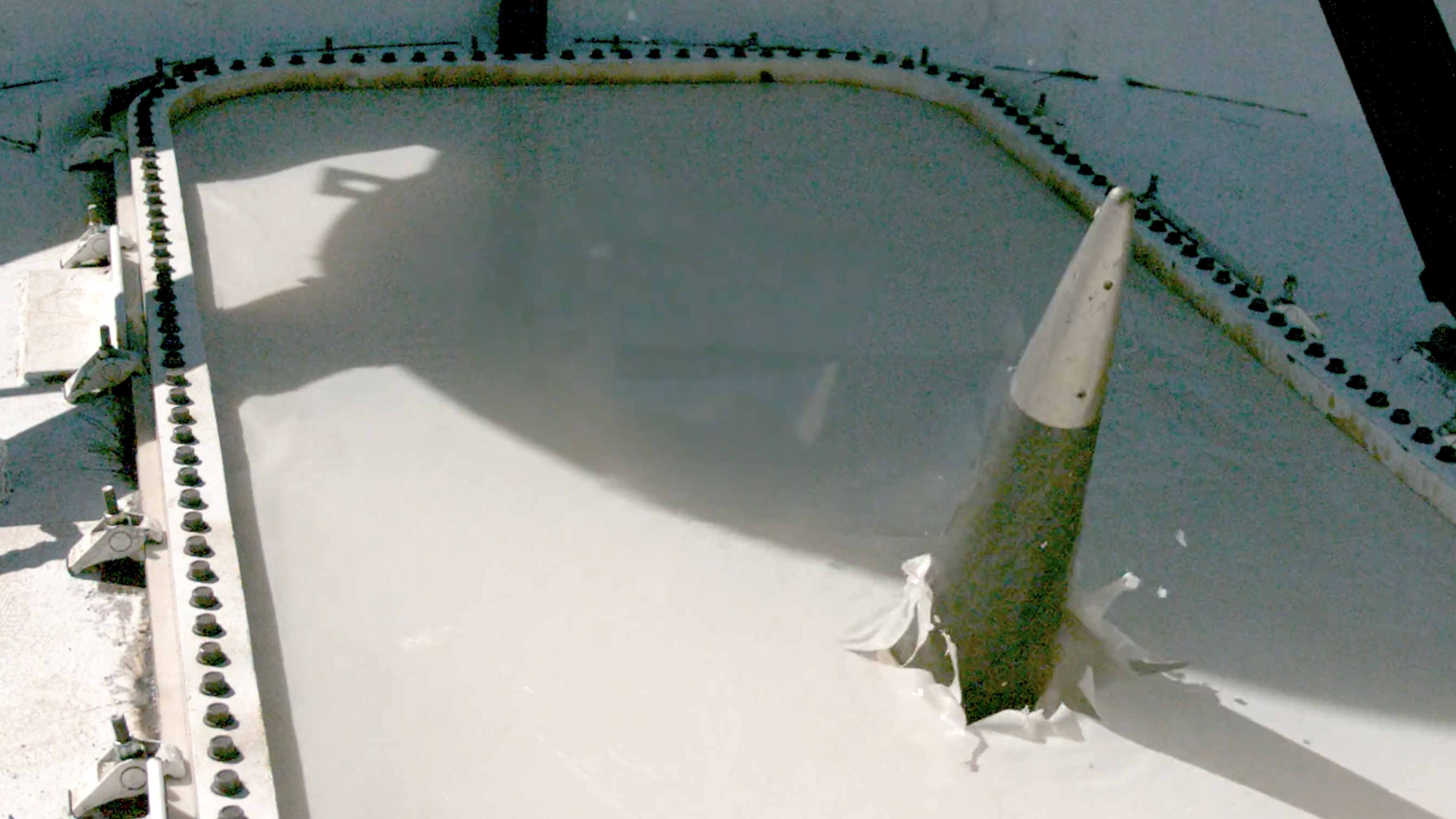
While the concept is fairly simple, the challenge of making it work reliably and repeatedly is a significant one.
“It’s a radically different way to accelerate projectiles and launch vehicles to hypersonic speeds using a ground-based system,” SpinLaunch CEO Jonathan Yaney told CNBC.
Yaney established SpinLaunch in 2014, but the company has maintained a low profile until now, and the CEO has said that this plays to its strengths and its “audacious and crazy” space launch project.
The suborbital accelerator used in the first SpinLaunch test is a one-third scale version of the planned final hardware but is still 300 feet tall, Yaney explains.
The suborbital projectile used in the initial test was around 10 feet long and was accelerated to “many thousands of miles an hour,” using approximately 20 percent of the accelerator’s power capacity.
SpinLaunch says it ran the suborbital accelerator test in October as a way of validating the basic concept in terms of aerodynamics and release mechanisms. Since this was just the first test for the concept, the projectile was propelled to a height of “tens of thousands of feet.”

The projectile was reportedly recovered after its flight, with reusable vehicles being a key part of the SpinLaunch concept. However, it’s not immediately clear how the projectile will be recovered, especially since video concepts of the launch sequence show it splitting into at least two parts. Adding a recovery system would add bulk and complexity but might also reflect the value of each projectile, which is presumably crafted from exotic materials to withstand extreme speeds and friction heating.

The company has future plans to add a rocket motor inside the projectile to provide for orbital flights. In that version, the rocket booster will ignite only after it separates from the projectile/launch vehicle, as you can see in this video. According to previous reports, the projectile will coast, unpowered, for around a minute, before the rocket ignites at an altitude of approximately 200,000 feet.
“Because kinetically launched satellites exit the atmosphere without a rocket, SpinLaunch enables a future in which constellations of satellites and space payloads can be launched with zero emissions in the most critical layers of the atmosphere,” the company says on its website.
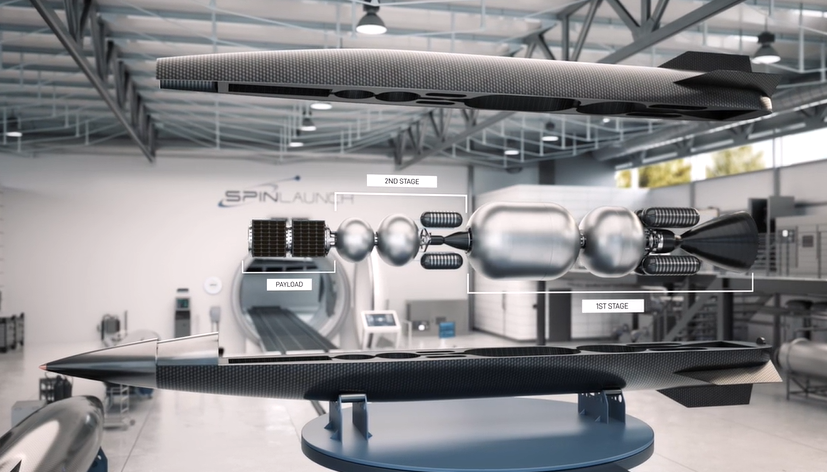

And the company claims that these kinds of flights could start happening soon, with plans for around 30 suborbital test flights over the next six to eight months. Beyond that, the company is hopeful of moving into orbital launch.
At the moment, SpinLaunch says it has completed around 90 percent of risk-reduction studies relating to the full-scale system, as it works toward finalizing its design.
The idea behind SpinLaunch may indeed be “audacious and crazy,” but, if it can be fully matured, the technology would appear to offer major advantages over traditional space launch systems. Today, a rocket delivering a payload into orbit will consist primarily of fuel, by mass, reducing the size of the payload that can be carried. SpinLaunch, in contrast, envisages a much smaller rocket that carried a reduced fuel load, but a proportionally larger payload. The company currently forecasts its orbital vehicle delivering a payload of around 400 pounds into orbit.
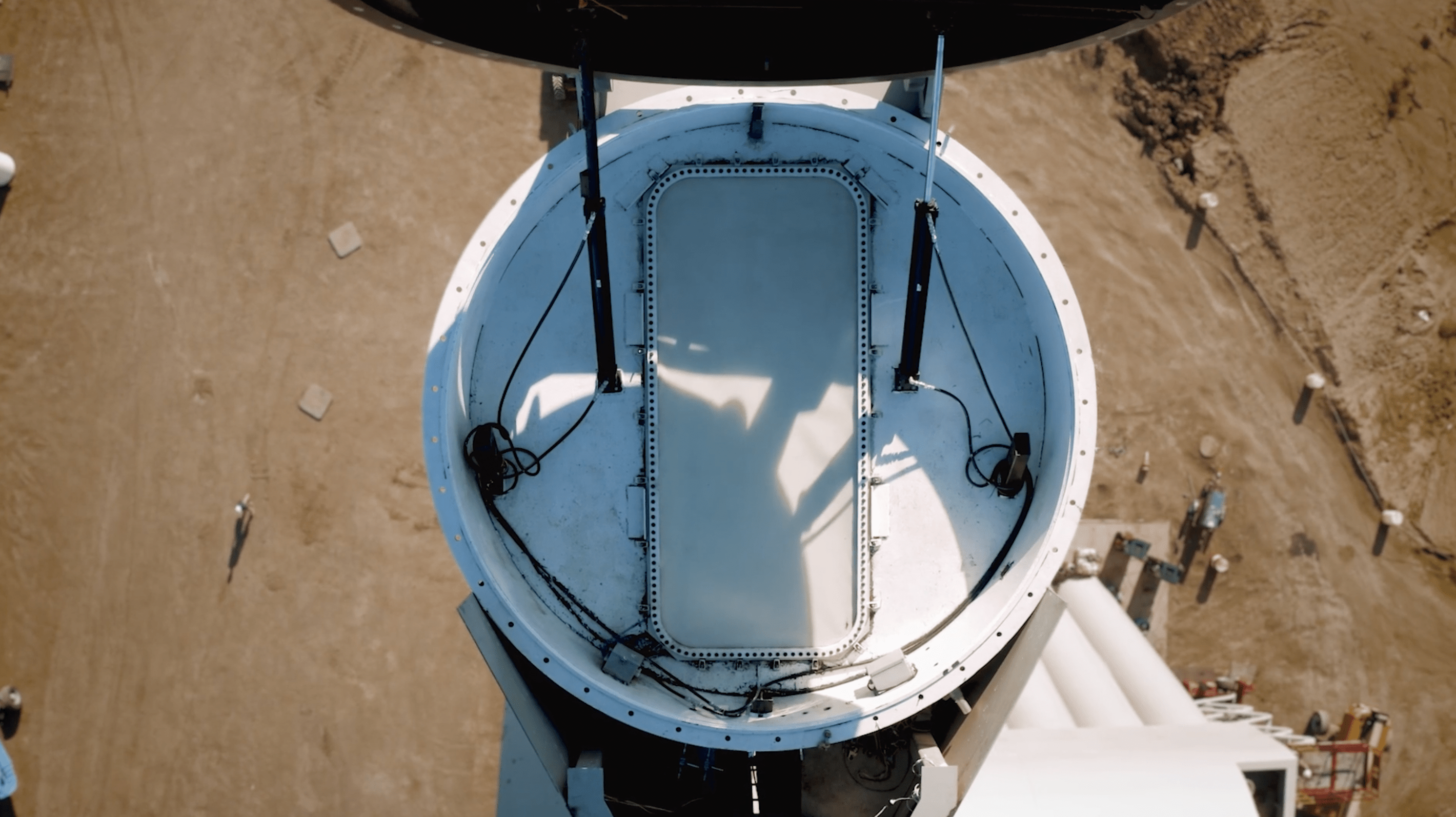
Once the orbital vehicle is ready, SpinLaunch says it will have to move away from Spaceport America and seek a coastal space launch facility that will be able to support “dozens of launches per day,” according to Yaney. The rapid tempo of launches without the use of large complex rockets, will, in turn, bring down the costs of putting cargoes into orbit. The company claims that the velocity boost imparted by the accelerator drive results in a four-times reduction in the fuel required to reach orbit and a ten-times reduction in cost.
The same kinds of drivers — speed and simplicity for getting small payloads into orbit, with a much-reduced fuel requirement — are also involved in the Green Launch initiative, which takes a different approach, using ground-based “impulse launchers” to replace a traditional rocket’s first stage. In the summer, Green Launch conducted trials at the U.S. Army’s Yuma Proving Ground in Arizona, using some of the equipment left behind by the 1960s-era High Altitude Research Project (HARP).
The SpinLaunch venture has so far raised $110 million from a variety of investors and is aimed squarely at the commercial marketplace, but the fully mature technology could well have military applications, too. There is already Pentagon interest in the company, with a contract having been signed with the Defense Innovation Unit in 2019.
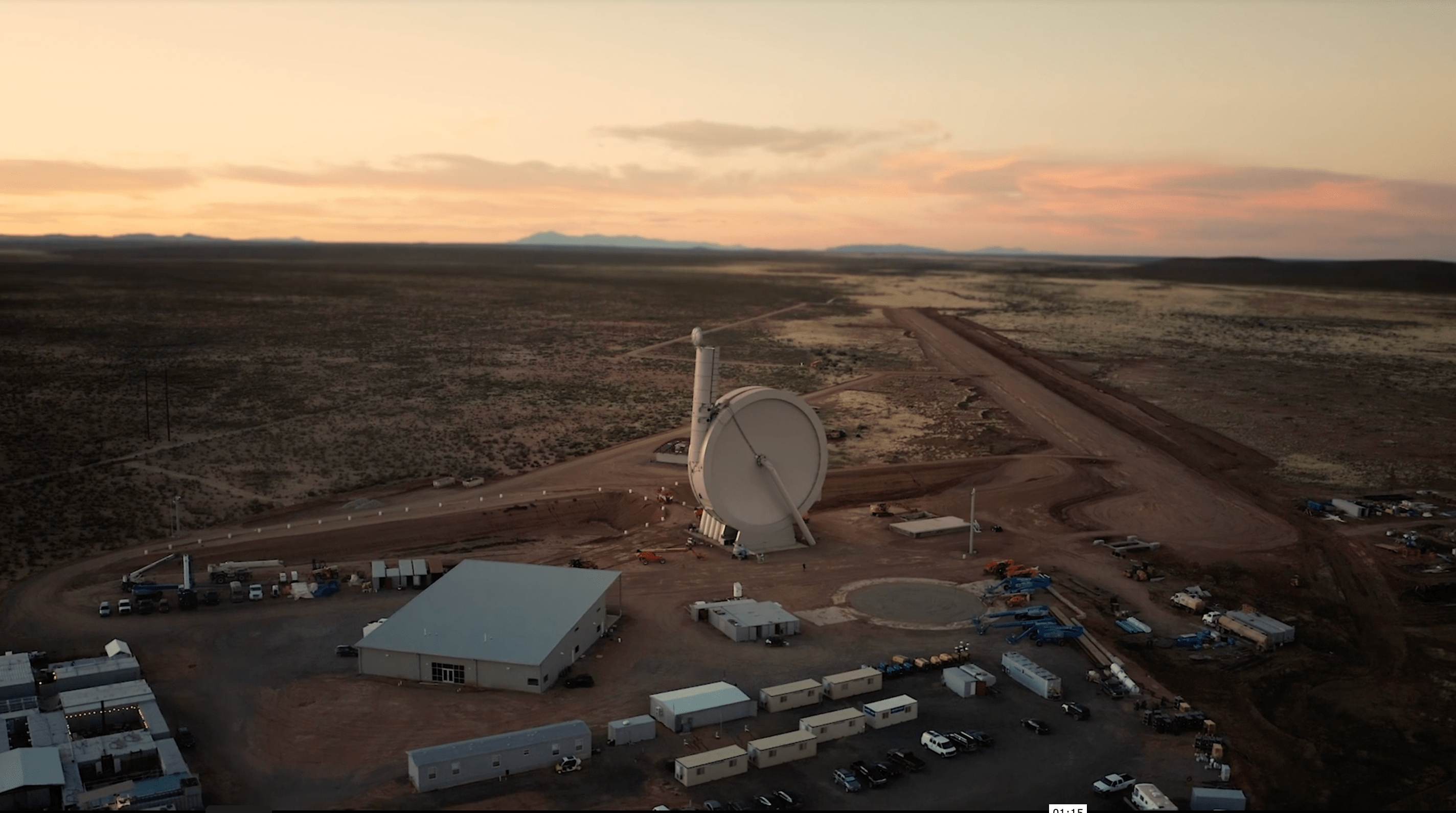
The limited throw-weight of the system, even in its type of orbital vehicle form, means that SpinLaunch will not be able to deliver larger payloads into orbit. After all, many traditional space launch rockets have throw weights measured in tons, not pounds. Nevertheless, SpinLaunch is likely to still meet many of the requirements of the U.S. Air Force, as well as the Space Force and the Missile Defense Agency, which increasingly need to put smaller satellites into space.
What’s more, the promise of being able to rapidly put satellites into space could have a particular appeal to the military, which is increasingly facing the reality that its larger satellites would be vulnerable to an expanding array of threats, kinetic and otherwise, during a peer-state conflict. It’s conceivable the SpinLaunch concept could be an ideal way of firing smaller, less complex satellites into orbit at short notice, should the existing constellation of satellites be put out of action or otherwise compromised. And constellations made up of throngs of satellites that create a mesh network covering the planet will become just as big of a priority for the DoD in the coming years as traditional, far larger, and less numerous satellites. The same is true for commercial space applications. This concept seems ideally suited to support such endeavors.

We also have to note that this concept, even in its smaller form, clearly could have other military applications. Ultra long-range artillery and strike capabilities, especially ones that can hit targets in short time frames from far away, are among the U.S. military’s top priorities. It doesn’t take much imagination to see how this type of apparatus could potentially provide such a solution, slinging a warhead over long distances within the atmosphere. That’s not to say that SpinLaunch would have anything to do with such a concept, but it seems blatantly attractive in terms of weaponized applications.
While there’s clearly a growing appetite within the Department of Defense to investigate the potential of novel ways of putting military cargoes into orbit, SpinLaunch isn’t the only start-up involved. A little less than a year ago, for example, Aevum held an online rollout for its Ravn X Autonomous Launch Vehicle. This is planned as a reusable drone that will carry an underslung rocket that will, in turn, launch a small payload, such as a satellite, into low orbit.
Both the SpinLaunch and Aevum concepts claim to offer solutions that are, broadly speaking, simpler, cheaper, and more flexible than traditional rockets fired from launch pads. Clearly, the companies must also be confident that their proposals would undercut the cost of air-launch methods, including the Northrop Grumman Stargazer or Virgin Orbit LauncherOne, both of which use adapted airliners to launch rockets that in turn put small satellites into orbit. The Pentagon already uses the Stargazer to launch experimental or secret payloads. Of course, SpinLaunch involves fixed infrastructure, like a traditional launchpad, so lacks the inherent mobility and flexibility of air-launch alternatives. SpinLaunch says it expects to conduct its first customer launches in late 2024.
Appearing almost out of nowhere, with a concept akin to something out of science fiction, it’s tempting to doubt the viability of SpinLaunch, but the company has clearly pursued an innovative concept for rapidly putting smaller satellites into space at low cost.
Whether or not we will soon see an age where massive disc-like structures dot the coast and act as a primary means of space access remains up in the air.
Contact the author: thomas@thedrive.com
